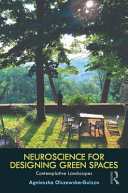Greenspace and Safety
Perceptions prevail, again
Perceptions prevail, again
Guiding people toward goodness
Using online surveys Menzel and teammates studied how expectations influence the consequences of seeing photographs of nature. The research team report that “viewing nature photographs can lead to subjective restoration, as well as improvement in mood and cognitive function. . . . [investigators] manipulated knowledge about physical and mental health effects related to nature experiences before participants viewed nature photographs . . . actual restoration was positively related to expected restoration.
Multisensory experiences evaluated
Ong, Cintron, and Fuligni link pleasant in-nature experiences to lower inflammation levels. They report that “Leveraging survey and biomarker data from 1,244 adults (mean age = 54.50 years, range = 34–84 years) from the Midlife in the United States (MIDUS II) study, we examined associations between nature engagement, operationalized as the frequency of pleasant nature encounters, and systemic inflammation. Concentrations of interleukin-6 (IL-6), C-reactive protein (CRP), and fibrinogen were measured from fasting blood samples.
Johansson lead a team which assessed how mentally refreshing different outdoor spaces are. They had Swedish adults from urban and rural areas “read scenarios concerning encounters with each of these four animals during recreational visits to a nearby natural setting. The scenarios varied in how frequently the person could expect to encounter each animal across visits (never, sometimes, often). . . . Across all areas . . .
Powerful repercussions for public space design
Open or dense, different effects

Green spaces where people and nature flourish.
Hooyberg and colleagues studied human responses to being in different sorts of spaces via virtual reality and it seems likely that their findings can also be applied in other settings.